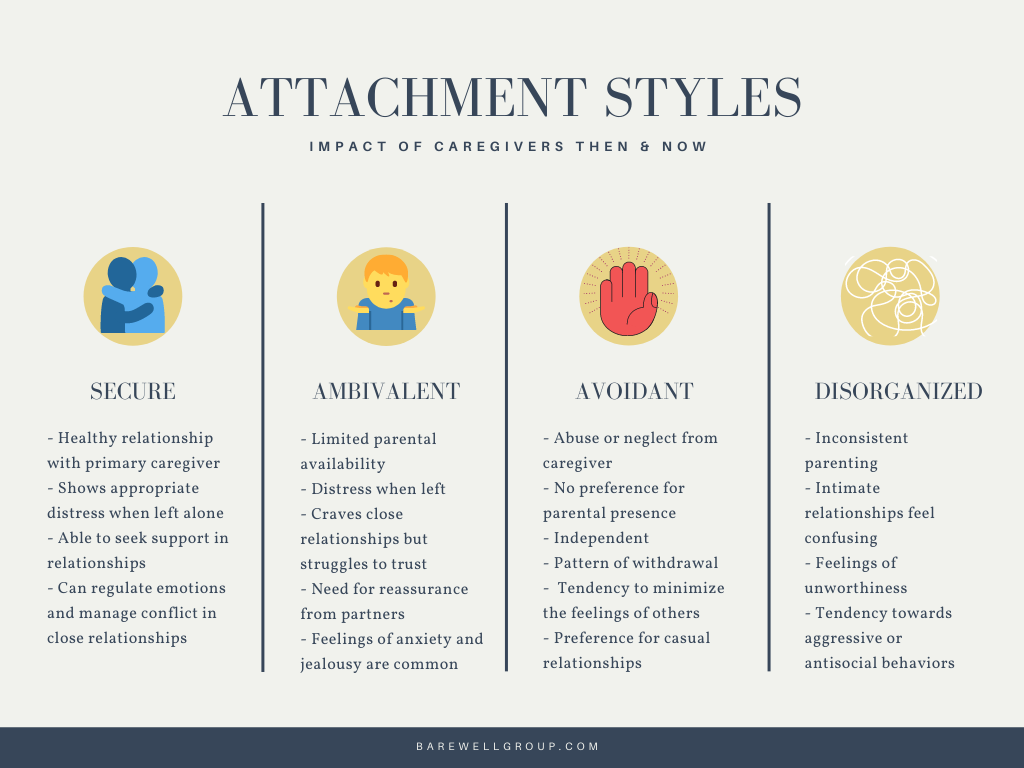Attachment Style: The Theory of Human Relationships
You know the popular trope about therapists always wanting to hear about your childhood? Let’s talk about that.
We learn behaviors from what we see. From a young age, you are internalizing how people interact with one another. You get the most exposure to the relationship dynamic between your nuclear family - specifically between yourself and your primary caregiver. As therapists, we want to know what you learned in this early stage of development to see how it is impacting your current functioning.
This will be the first part in a series on attachment. To begin, we will look at the theory of attachment. You might be thinking theory is only useful for clinicians. In this case, the theory can help explain the connection between the past and the present. Once you understand the context, you can apply it to your own life.
One important note, while childhood does tend to have a significant impact on how we develop, it is not the only determining factor and we all have the ability to change. The brain is elastic, resilient, and capable of transformation which we will explore in the next article.
Attachment theory is a core psychological theory established by John Bowlby and Mary Ainsworth. John Bowlby, like Freud, believed mental and behavioral patterns could be traced back to early childhood. Bowlby popularized the notion that children should experience a warm and loving relationship with their primary caregiver. He theorized that without nurturing from a mother-figure, a child would suffer significant and irreversible mental health consequences. The impact of the relationship with a primary caregiver is widely accepted now, but was controversial at the time.
Prior to Bowlby, it was assumed that attachment was learned: we need our mothers to survive as infants so we learn attachment. Bowlby perceived the need for not just survival, but comfort and care. While evolutionary in origin, attachment evolved from being about the need for food, to the need for a sense of security. Once a child feels secure, they can explore the greater world. Without this sense of security, a child will be limited in ability to interact with the world. You may see where this is going…
Mary Ainsworth expanded upon the work begun by Bowlby. Ainsworth created the Strange Situation assessment to study behavior in children aged 12 to 18 months. In the Strange Situation procedure, an infant is brought into a room with their mother. A stranger joins the pair and the mother leaves. The infant’s behavior when left alone with the stranger is observed as is the infant’s response upon their mother’s return. This experiment resulted in the creation of three main attachment styles: Secure Attachment, Ambivalent Insecure Attachment, and Avoidant Insecure Attachment. Later, researchers added Disorganized Insecure Attachment.
What kind of child do you think you were? How do you think you would react to being left? To the presence of a stranger? While interesting as a thought experiment, considering how capable you felt of independence at the age of one may still be influencing how you feel at 31 or 51.
Bowlby and Ainsworth shifted the context of human behavior. Studies continue to confirm the impact of early relationships on childhood development. The number of adverse childhood experiences strongly predict outcomes for adulthood.
The correlation between attachments in childhood to healthy relationships in adulthood is why your therapist will likely ask: “what was your relationship like with your mom?”. In our next article, we will further explore the link between the past and the present. We will also discuss the ability to change.
While the past can be impactful on our present, it does not have to determine our future.


